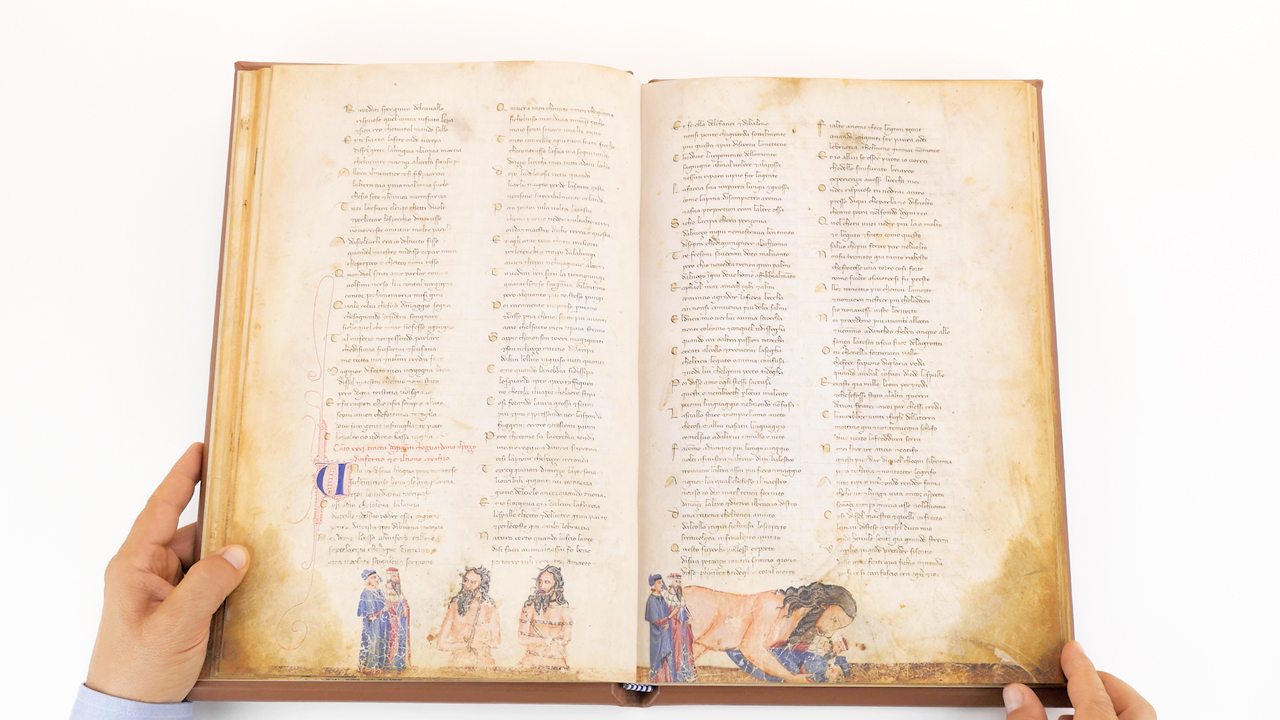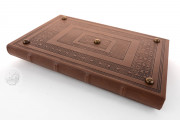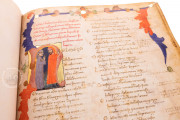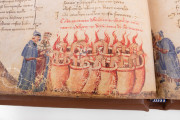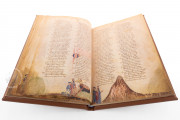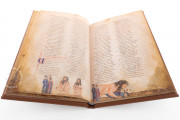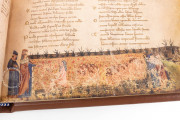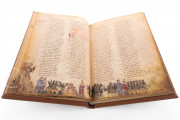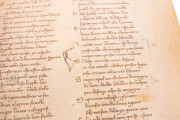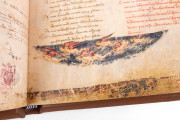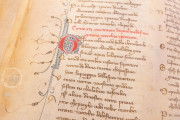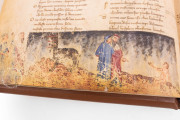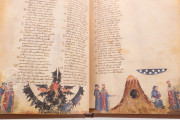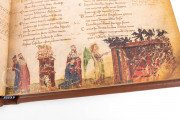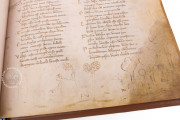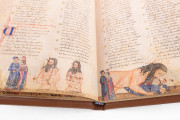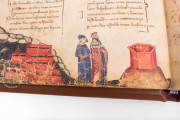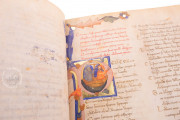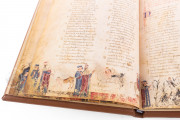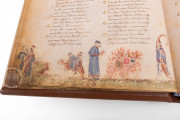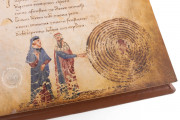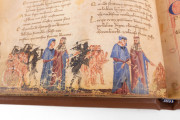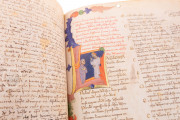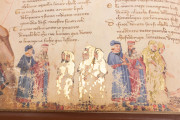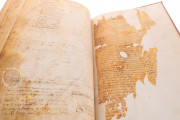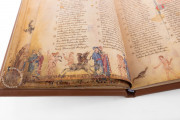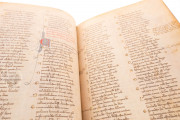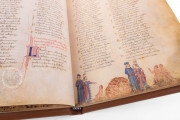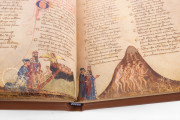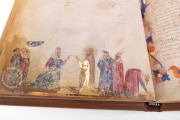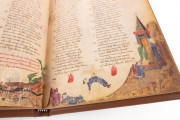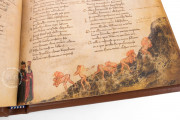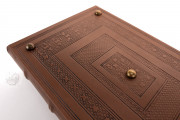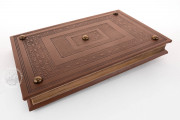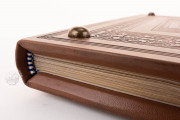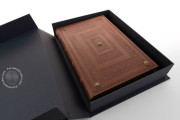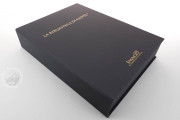Currently preserved in the Laurentian Library in Florence, the Strozzi 152 Manuscript is probably one of the first manuscripts of Dante's Comedy to have been illustrated canto by canto. The identity of the scribe is unknown, while the miniatures have been attributed to the workshop of Pacino di Bonaguida.
The forty-nine illuminations, produced in Florence between 1335 and 1345, are placed at the bottom of each folio. The Inferno features fully colored illustrations, while the Purgatory contains drawings by Maestro Daddesco. The third cantica, which lacks decorations, was probably left incomplete due to lack of funding or time constraints.
Divina Commedia Strozzi 152 features commentaries by prominent contemporary intellectuals such as Bosone da Gubbio, Jacopo della Lana and Dante's son Jacopo Alighieri. F. 92v. contains a poem (a carmen on Castel dell'Ovo) that has been attributed to Boccaccio.
Impressive Illuminations Complementing the Text
Many scholars have stated that the first folios of each cantica, as well as the iconographic program of the first two canticas, were decorated by Pacino di Buonaguida. Pacino was a painter and illuminator active in Florence between 1302 and 1347, and recent studies have confirmed that many manuscripts of the Comedy were produced in his workshop between 1330 and 1350. The illuminations adorning the beginning of each canto resemble those included in manuscripts by Francesco da Barberino, while those contained in the cantos are all decorated with aniconic symbols such as arabesques and volutes.
In 1969-1970 Brieger, Meiss and Singleton defined the illuminations as impressive due to their meticulous details, which help to convey the concepts contained in Dante's work. According to academics, the decorations in this Codex bear significant similarities with medieval chivalric literature — for instance, the illustrations at the bottom of each page are part of a continuous narrative, which is why the same characters are shown multiple times in a single space. This allows the reader to follow the chain of events not only by reading the text but also through the pictures.
It is further worth noticing that the initials of each canticle were penned with ink and only later watercolored by an anonymous Florentine artist — the style is strikingly similar to that of the painter who created the triptych of the Czech castle of Konopiště, currently kept in the National Gallery in Prague.
In 2000, the art historian Alvaro Spagnesi described the illustrations in the Codex as peculiar, due to the fact that in folio 1v Virgilio appears for the first time to Dante while standing inside a radiant mandorla, as if he had been sent to the poet by divine intercession. According to Spagnesi, the iconography of Virgil within the mandorla resembles the figure of Adam in a fresco by Jacopo Torriti in the Basilica of Saint Francis in Assisi.
The iconography and page organization of the Divine Comedy Strozzi 152 are the same as those in Riccardiano 1035, a manuscript of the Divine Comedy written and illustrated by Giovanni Boccaccio in the second half of the fourteenth century.
Binding description
Part of the leather binding is still preserved and contains dry-tooling decoration coeval with the text.
We have 1 facsimile edition of the manuscript "Divine Comedy - Strozzi 152 Manuscript": Divina Commedia Strozzi 152 facsimile edition, published by Imago, 2019
Request Info / Price
